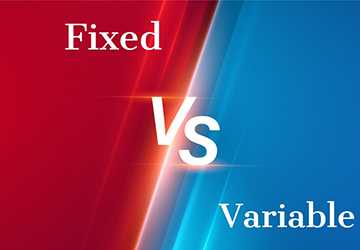6 Life Insurance Policies That Could Pay Out $1 Million+ to Your Beneficiaries
Securing your family's financial future often starts with life insurance, a cornerstone that ensures stability when you’re gone. For most, a standard policy offers adequate protection.
But for those seeking to solidly establish a legacy, there exist policies with the potential to transform beneficiaries' lives with payouts exceeding $1 million.
In this blog post we’ll explore 6 life insurance policies that could payout $1million. These substantial payouts unlock capabilities.
They settle outstanding debts, fund education, support a business, or open investment opportunities to accelerate growth. For your heirs, that million has the power to change everything.
Why Should You Consider Life Insurance?

Life insurance aims to establish certainty amid the unknowns we all face. Effective policies banish worries over lost income, unpaid debts, estate taxes and other obligations should the policyholder pass away unexpectedly. For survivors, substantial payouts lift the burdens of managing those costs alone.
More than financial assistance, however, sizable death benefits reinforce a commitment to family. They flow from the desire to support spouses, children and other dependents beyond our lifetimes.
When crafted thoughtfully, life insurance creates room for mourning without fiscal distress and for rediscovering stability in time.
6 Life Insurance Policies With 7-Figure Potential
Not all policies hold the potential for million dollar payouts. Term life insurance, while affordable, only pays benefits if death occurs during the coverage term, usually lasting 10 to 30 years.
Permanent policies, however, remain in effect for life and enable cash value accumulation over time. The latter also offer more flexibility to structure benefits reaching into seven figures.
The following permanent policy types stand out for their potential to provide death benefits of $1 million or more.
Take time to understand their intricacies, as professional guidance is key to determining if they align with your budget, timeline and legacy goals.
1. Whole Life Insurance
Whole life insurance offers lifelong coverage through predictable premiums, making it a stalwart option. Premiums remain constant while cash value grows in accessible savings.
Potential Benefits
● Guaranteed death benefit during life of policy
● Cash value accumulation and potential borrowing
● Fixed, consistent premium payments
Considerations
● Higher monthly premiums than term insurance
● Sparse policy customization options
● Require health evaluation to qualify
For enduring, reliable protection, whole life warrants consideration. Consult an agent to weigh it against more flexible permanent policies below.
2. Variable Life Insurance
Designed to build cash value, variable life insurance enables policyholders to invest savings in markets suited to risk tolerance. Strong market performance makes this option fitting for substantial payouts down the road.
Potential Benefits
● Market driven cash value and death benefit growth
● Policyholder controlled investments
● Income tax deferred earnings
Considerations
● No guaranteed cash value
● Potential for investment losses
● Ongoing investment management required
Variable policies demand responsibility and awareness of market factors from policyholders, but in return offer control over funds backing seven figure payouts.
3. Survivorship or Second-to-Die Policies
As dual policies covering both partners in a marriage or business partnership, these permanently cover both lives while providing a payout when the second policyholder passes. By design, premiums only need to be paid until the first death occurs.

Potential Benefits
● Accounts for dual incomes before payout
● Delayed payout allows more cash value accumulation
● Premium payments cease after first death
Considerations
● Insurability depends on both applicants' health
● Risk of coverage gap if both pass simultaneously
● Possibly higher premiums than individual policies
For those seeking million dollar joint coverage, survivorship policies reward patience in their structured payouts.
4. Universal Life Insurance
Sometimes referred to as flexible premium adjustable life insurance, universal life offers both adjustable coverage and premium flexibility.
Policy holders can modify death benefit amounts and redirect premium payments as needs change after policy purchase. This adaptability makes it fitting to plan for substantial payouts.
Potential Benefits
● Adjustable death benefit amount
● Option to change premium payments
● Cash value with interest growth
Considerations
● Complex with multiple moving parts
● Risk of lapse if funding insufficient
● Requires close monitoring and management
For households seeking responsiveness in permanent coverage, universal life’s adaptability makes million dollar payouts achievable.
5. Single Premium Life Insurance
As its name suggests, single premium policies require a lump sum payment upfront. This fully funds the policy, requiring no further payments even as lifelong coverage and cash value accumulation continue.
The single premium can more readily reach high amounts to support seven figure payouts later on.
Potential Benefits
● Fully paid upfront for life of policy
● Frees up future income for other goals
● Potentially higher death benefit than recurring premiums
Considerations
● Require significant single premium amount
● Minimal flexibility after purchase
● Best suited to certain demographics
While the upfront outlay is substantial, single premium policies streamline planning for policyholders looking to lock in enduring and impactful benefits.
6. First-to-Die Life Insurance
In contrast to survivorship life insurance, first to die policies pay out when the first partner in a joint policy passes away.
Designed for family breadwinners, they provide support when that income is lost while covering final expenses. Cash value accumulation also progresses more quickly.
Potential Benefits
● Earlier payout to support household
● Cash value builds faster than survivorship policies
● Income replacement as needed
Considerations
● Benefits end after first payout
● Less accumulation potential than survivorship
● Typically only one death benefit payment
First to die insurance meets different needs than dual coverage, but remains an option supportive of million dollar payouts for the right households.
Choosing the Policy That Sets Your Loved Ones' Future
In the breadth of life insurance options, the search for policies suited to seven figure benefits can prove daunting. As you evaluate permanent coverage against your household’s unique needs, weigh input from trusted financial advisors.
Most crucially, keep your beneficiaries in focus as you plan. A carefully chosen policy stands to lift their financial burdens tremendously in your absence.
Peace of mind for them starts with the right choice today.





